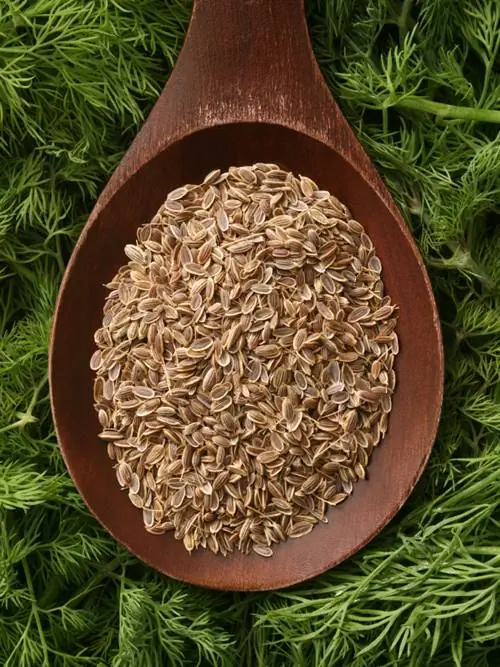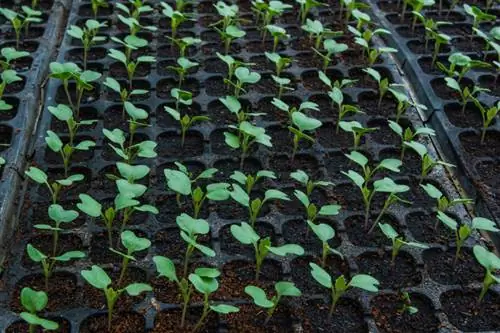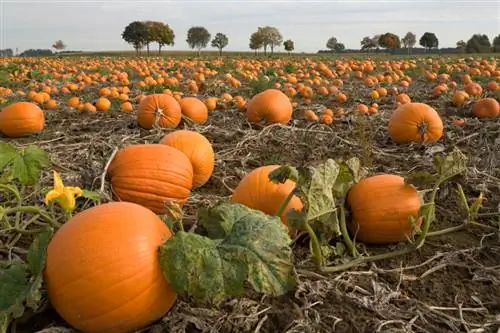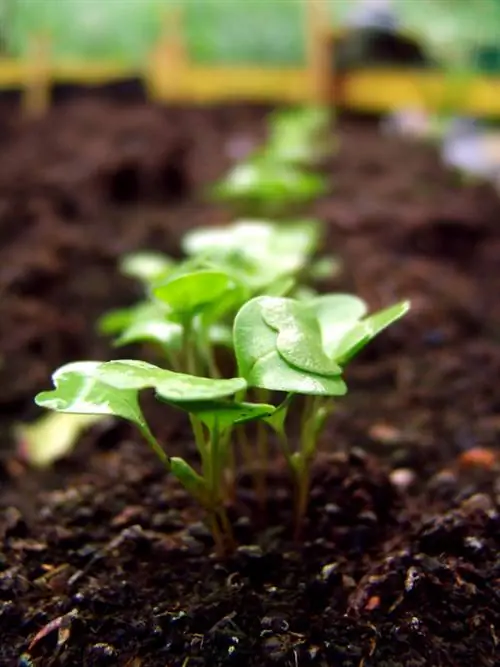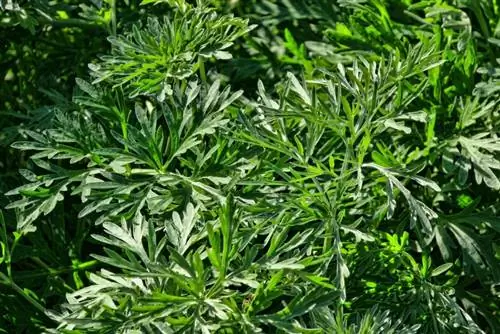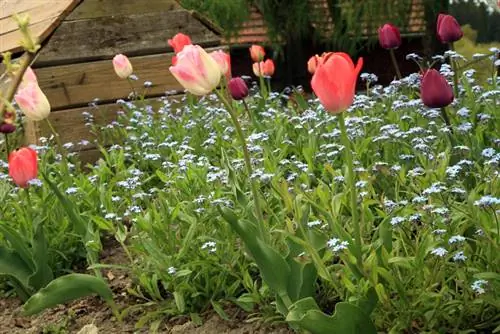- Author admin [email protected].
- Public 2023-12-16 16:46.
- Last modified 2025-01-23 11:20.
Dill is one of the most popular culinary herbs because it has a very aromatic taste and can be used for many purposes. It can be sown successfully in a suitable location outdoors or in a pot with relatively little care,
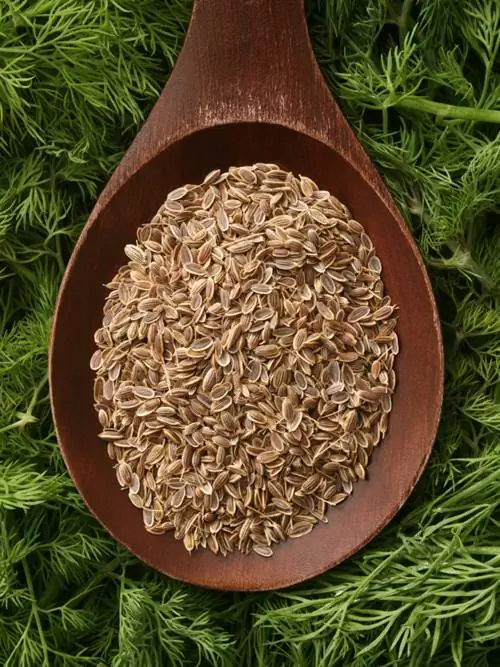
How can I sow and care for dill correctly?
To sow dill successfully, choose a sunny to partially shaded location, provide loose, well-drained soil and sow between mid-April and the end of August. During the germination phase, keep the soil moist and remove weeds carefully.
Choose a suitable location for the dill
Dill can not only be planted outdoors or in raised beds, but it can also be cultivated in a pot on the balcony or terrace. Basically, you should make sure to choose a location for the dill that is in full sun to a maximum of partial shade. Giving dill a more sheltered place in the garden will have a positive effect on growth and the expected harvest. Otherwise hail and strong gusts of wind can easily damage the delicate plants. When it comes to soil, dill is actually relatively undemanding, but it should be a loose substrate with no tendency to waterlogging.
The right time to sow dill
Sowing dill directly outdoors is possible from around mid-April, when night frosts are no longer expected. If you want to experience the dill blossom and get dill seeds for processing or re-sowing, you should have sown the dill by the end of June at the latest. If, on the other hand, you are only interested in harvesting and drying the dill herb, you can sow the dill outdoors until around the end of August.
What you need to know about sowing dill
Since dill, like many other herbs and vegetable plants (e.g. lovage, celery, carrots), is an umbelliferous family, it should, if possible, only be grown in a crop rotation with rest periods for the soil in the same location. However, dill often self-sows in a larger bed, so if you selectively remove emerging weeds, new dill plants will often grow right next door without you having to specifically sow them. Dill is a natural defense against garden pests such as cabbage white butterflies and aphids. It is therefore often planted in rows between the following types of vegetables in the vegetable patch:
- Carrots
- Salad
- Onions
- Cucumbers
When dill is sown in rows, you should leave a distance of around 15 to 25 centimeters between the rows so that the herb can develop well.
Care measures for freshly sown dill
You can easily recognize freshly sprouted dill by its characteristic, delicate appearance. During the germination phase you should keep the soil sufficiently moist. Nevertheless, you should not water too heavily, as the dill is sensitive to waterlogging. In the early growth phase, you should carefully remove any weeds that sprout between the plants so that they do not overgrow the dill.
Tips & Tricks
Dill seeds only last for about two years, so they should be used as fresh as possible for re-sowing.

